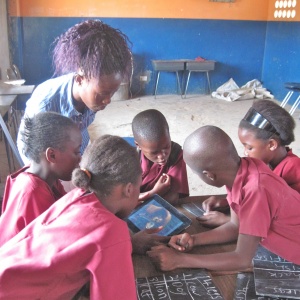OER4Schools/activities/no hands up
| Resource details | |
| Title | no hands up |
| Topic | |
| Teaching approach | |
| Learning Objectives | |
| Format / structure | |
| Subject | |
| Age of students / grade | |
| Table of contents | |
| Additional Resources/material needed | |
| Useful information | |
| Related ORBIT Wiki Resources | |
| Other (e.g. time frame) | |
| Files and resources to view and download | |
| Acknowledgement | This resource is part of the OER4Schools programme. |
| License | |
This is a useful technique to encourage all students to remain attentive and to participate interactively during lessons. The teacher poses a question for the students to think about and tells them, either before or after asking the question, that there should be 'no hands up' as everyone is expected to participate. The teacher then calls on a random student to answer the question. Staging questioning this way can motivate students and keep them focused on the shared input as well as giving less confident children the chance to share their ideas.
Here are the steps:
1. Students listen to a question or a discussion point and are given wait time to formulate their responses. The teacher can introduce the technique either before or after posing the question.
2. Following the wait time, the teacher asks a random student for a response.
3. When further questions are asked in the session, the teacher reminds the students that there should be 'no hands up' and that they may be asked for a response at any time.
Tips for using the technique successfully:
- warn students that this is a 'no hands up' session
- establish a friendly, supportive, non-judgemental atmosphere using positive body language and reaffirming phrases
- remind students to listen to what other students have said as they may have to adjust their response accordingly
- praise students for active listening, for making a contribution and for respecting the contributions made by others
- differentiate questions to give students the best chance of a positive outcome
Giving students 'wait time' has been shown to significantly improve the quality of their responses.


